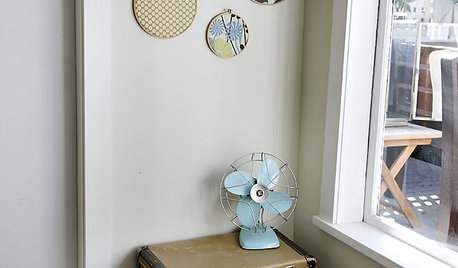Why do you paint the trunks white?
insipidtoast
13 years ago
Related Stories

VINTAGE STYLEFlea Market Find: Steamer Trunks
The onetime travel staple today sees stay-at-home use as table, storage and seat
Full Story
PRODUCT PICKSGuest Picks: Steamer Trunks That Go the Distance
Timeworn, antique inspired or looking brand new, these steamer trunks are durable and versatile for storage and as eclectic tables
Full Story
DECORATING GUIDESBring Nature Indoors With Tree Stumps, Trunks and Logs
Furniture formed from wood in its natural state adds earthy elegance to any room
Full Story
MOST POPULARMust-Try Color Combo: White With Warm Off-White
Avoid going too traditional and too clean by introducing an off-white palette that brings a touch of warmth and elegance
Full Story
DECORATING GUIDES10 Reasons to Embrace White Walls
Do they strike you as even more boring than watching white paint dry? Consider what makes them the darling of so many
Full Story
COLOR9 Decorating Ideas for White Living Rooms
These inspiring living rooms show how good an (almost) all-white room can look
Full Story
COLORThe Best White and Pastel Colors for Every Kind of Natural Light
Understand how sunlight affects your rooms and get tips on choosing paint colors for each type of exposure
Full Story
WHITEHow to Pick the Right White Paint
White is white, right? Not quite. See 8 white paint picks for 8 very different effects
Full Story






alan haigh
milehighgirl
Related Discussions
do I paint the trunks of my pear and peach
Q
Picking paint finishes--what do you prefer and why?
Q
BM Paint. What finish do you get and why?(matte vs. eggshell)
Q
Granite countertops - would you do it again? Why or why not?
Q
brandon7 TN_zone7
milehighgirl
alan haigh
insipidtoastOriginal Author
alan haigh
alan haigh
gator_rider2
mr.ed
brandon7 TN_zone7
brandon7 TN_zone7
alan haigh
alan haigh
brandon7 TN_zone7
alan haigh
Michael
brandon7 TN_zone7
brandon7 TN_zone7
marc5
oregonwoodsmoke
brandon7 TN_zone7
alan haigh
oregonwoodsmoke
Michael
alan haigh
brandon7 TN_zone7
Michael
alan haigh
Michael
brandon7 TN_zone7
alan haigh
alan haigh
brandon7 TN_zone7
alan haigh
brandon7 TN_zone7
alan haigh
northernmn
alan haigh
olpea
alan haigh
windfall_rob
alan haigh
insipidtoastOriginal Author
emack01_yahoo_com
northernmn
olpea
Konrad___far_north
gonebananas_gw
cebury